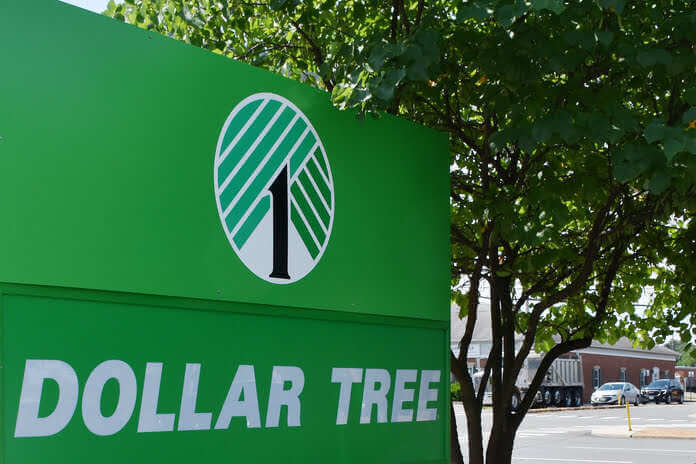Dollar Tree, Inc. (NASDAQ:DLTR) earnings during the second quarter of fiscal 2022 were higher than expected, although sales fell short of expectations. The top and bottom lines got better year over year. The results were aided by the company’s products still being in demand, which was countered by inflationary pressures and an unfavorable product mix brought on by the shift in demand from high-margin discretionary items to low-margin consumables.
The firm cut its fiscal 2022 guidance in response to inflationary pressures, Family Dollar’s intentions for pricing investment, and consumers’ shift toward consumable goods.
Due to lower-than-expected revenues in the fiscal 2022 second quarter and a revised outlook for the year, shares of Dollar Tree fell 8.4% in pre-market trading on August 25. In contrast to the industry’s 11% decrease, shares of this company have increased 18.2% so far this year.
Key Quarter Details
Dollar Tree Earnings increased 30.1% year-over-year to $1.60 per share, exceeding the $1.57 Zacks Consensus Estimate. For the company, this represented record second-quarter earnings. Strong top-line growth and higher margins both contribute to bottom-line growth.
While consolidated net sales increased 6.7% year-over-year to $6,768.5 million, they fell short of the $6,785 million Zacks Consensus Estimate. On a constant-currency basis, enterprise same-store sales (comps) increased by 4.9% over the prior year; after taking into account the effects of Canadian currency fluctuations, they increased by 4.8%. Comps for the Family Dollar banner increased by 2%, while they increased by 7.5% for the Dollar Tree banner. When Canadian currency movements were taken into account, comps for the Dollar Tree banner increased by 7.4%.
While the gross margin improved 200 basis points to 31.4%, the gross profit increased 14.2% year-over-year to $2,124.4 million. Gross margin was helped by gains from increased initial mark-on and leverage on distribution and occupancy expenses. Higher freight costs, markdowns, shrinkage, and unfavorable product mix due to a shift toward lower-margin consumable products partially offset this. The Family Dollar segment’s gross margin decreased 140 basis points to 24.7%, while the Dollar Tree banner’s gross margin increased 500 basis points to 37.4%.
Due to rising repair and maintenance costs, store payroll, stock compensation costs, general insurance liabilities, utilities, and other persistent inflationary pressures, selling, general, and administrative (SG&A) expenses as a proportion of sales grew by 100 basis points to 24%.
While operating income increased by 25.7% to $505.4 million, the operating margin increased by 120 basis points to 7.5% due to solid sales growth and gross margin expansion. In terms of segments, the operating margin for Dollar Tree increased by 530 bps to 15.4%, while it decreased by 340 bps to 1.7% for the Family Dollar segment.
Dollar Tree’s Balance Sheet
Dollar Tree had $688.9 million in cash and cash equivalents at the conclusion of the second quarter of the fiscal year. Net merchandise inventories reached $5,422.2 million, a 47.8% year-over-year rise. As of July 30, 2022, it has $8,396.5 million in shareholders’ equity, $3,419.3 million in net long-term debt (excluding current maturities), and current maturities.
In the second quarter of fiscal 2022, the company repurchased 1,664,717 shares for $235.8 million, averaging $141.67 per share. Dollar Tree still had $2.25 billion left over from its prior authorization as of July 30, 2022.
Retail Update
Dollar Tree established 127 locations, expanded or relocated 29 stores, and closed 57 stores in the second quarter of fiscal 2022. 257 Family Dollar locations were converted to the H2 or Combo Store styles by the company. In addition, it added another 697 Dollar Tree locations to the multi-price plus options throughout the quarter. By July 30, 2022, the company had 16,231 locations throughout 48 states and five Canadian provinces.
Dollar Tree Guidance
Dollar Tree plans to invest in the Family Dollar chain with competitive pricing to boost long-term store productivity and profitability. These efforts for the company will also accelerate long-term store expansion. Dollar Tree anticipates that the gross margin will be under pressure in the second half of fiscal 2022 due to investments and a shift in customer choice toward more consumable goods that are needed. As a result, it reduced the projected earnings per share for the upcoming fiscal year.
In contrast to the previously stated $27.76-$28.14 billion, Dollar Tree anticipates consolidated net sales of $27.85 to $28.10 billion. Compared to the previous projection, it expects slightly slower square footage growth in fiscal 2022 to balance greater comps growth. The business projects mid-single digit enterprise comps growth for fiscal 2022, with the Dollar Tree segment seeing a high single-digit gain and the Family Dollar segment experiencing positive comps. It anticipates a 3.5% rise in selling square footage as opposed to the 3.9% growth previously reported.
Instead of the previously forecasted $7.80–$8.20 per share, management now expects earnings of $7.10–$7.40 per share. The updated projection shows midpoint earnings-per-share growth of 25%.
Dollar Tree anticipates consolidated net sales of $6.75 to $6.87 billion for the third quarter of fiscal 2022, with enterprise same-store sales growing by mid-single digits. It projects $1.05 to $1.20 in earnings per share.
Featured Image: Megapixl @Rzyotova

















